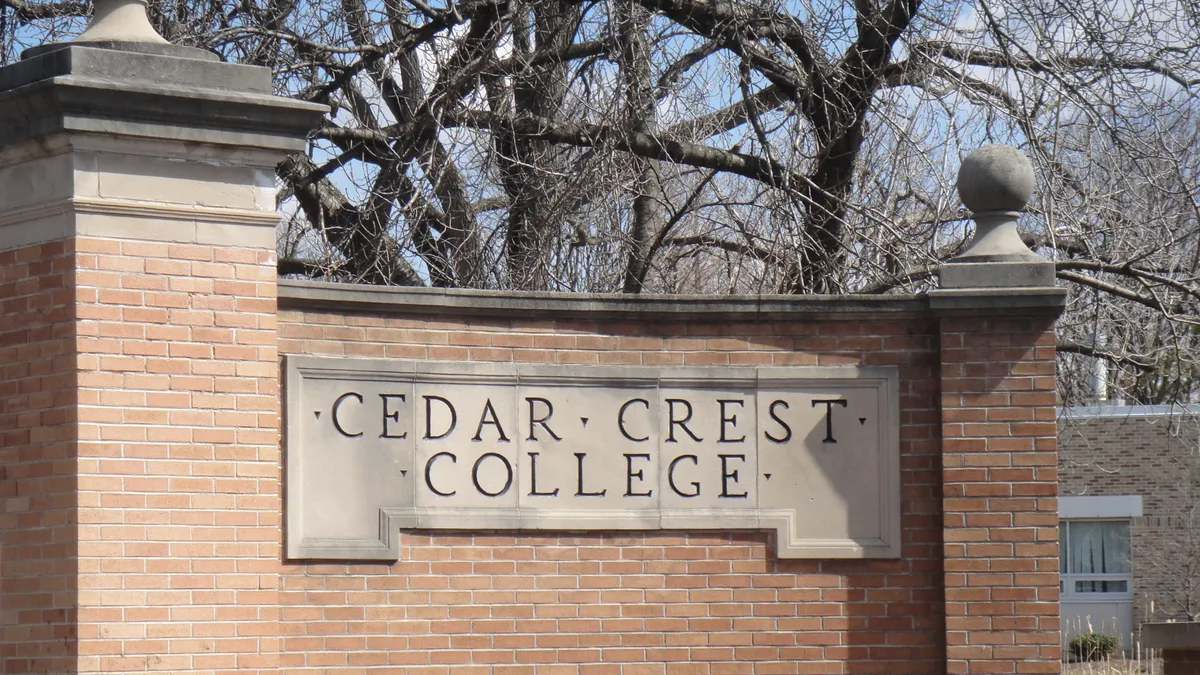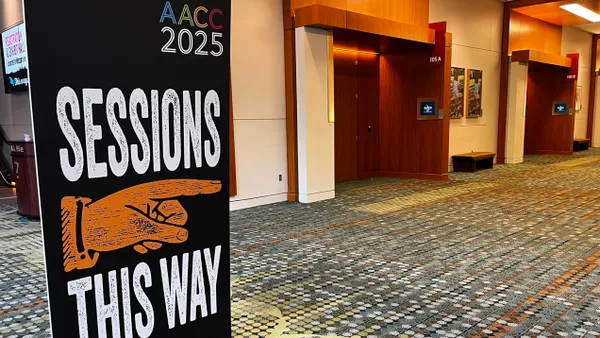Elizabeth Meade is the president of Cedar Crest College, a women’s college in Pennsylvania.
The first women’s colleges in the United States were founded in the 18th century in the face of deep-seated opposition to educating women. These institutions opened the doors of opportunity for women’s education, changing the face of this nation and the world for the better.
However, fewer than three dozen American women’s colleges remain — despite the fact that they continue to serve a purpose in educating women, especially those from underserved communities. A handful of women’s colleges have either closed or have begun admitting male students just in the past few years, including Mills College and Notre Dame of Maryland University.
When women’s colleges close, go coed or merge with another institution, the reason is always economic. Small, mission-driven colleges of all sorts are facing increased pressures due to increased expenses and lost revenue during the pandemic years and the declining demographic of college-going high school graduates.
Such moves are frequently received with opposition from alumnae, who have experienced the benefits of their women’s college education throughout their lives. The near-closing of Sweet Briar College in 2015 was one such example, as the Virginia institution was saved from closure by passionate alumnae who used every measure available to keep it open.
Given that women made up 57.6% of all undergraduate students in fall 2022, some have asked whether the world still needs women’s colleges.
The answer is a resounding yes. From uniquely preparing women to lead a global society and closing the gap in male-dominated fields, to being epicenters of inclusive excellence — and creating a community that promotes lifelong learning and connection beyond graduation — women's colleges have more relevance today than ever before.
America’s women’s colleges have unmatched strength and focus when it comes to forging social mobility, especially for women of color. While the outdated stereotype of women’s colleges remains that of a finishing school for the daughters of the affluent, in reality around 43% of full-time first-time students at women’s colleges are Pell Grant recipients, 93% receive some form of financial aid, and about half are Black, Indigenous or people of color. In addition, around one-fifth of these institutions are designated minority-serving institutions.
Cedar Crest College closely follows that pattern, with 40% of our students receiving Pell Grants, 38% being students of color, and 39% being first-generation college goers.
Today, women’s colleges continue to play a vital role in the higher education landscape by designing college experiences in which women are the focus — and the drivers — of academic excellence. Women’s colleges provide nurturing, empowering and inclusive environments that help young women find their voices and find the encouragement they need to take risks, push boundaries and succeed personally and professionally.
As the American workforce shifts toward STEM fields, we need women’s colleges more than ever. According to the National Center for Science and Engineering Statistics, women make up only 35% of the science, technology, engineering and math workforce, with women of color comprising just 5% of the total.
On average, the faculties of women’s colleges and universities are around 61% women, compared to 39.1% at public colleges and 37.7% at private institutions, according to a 2014 analysis. . Research has shown that women perform better in introductory math and science undergraduate courses and are more likely to pursue STEM majors when their professors are also women.
In addition, women’s colleges and universities proudly confer a significantly higher percentage of bachelor’s degrees in STEM fields to American women of color than at liberal-arts colleges, according to a 2020 analysis from the Center for the Advancement of Women at Mount Saint Mary’s University.
Women’s colleges also emphasize leadership, designing coursework around that concept. And it’s no secret that many women in leadership positions in government, business and industry earned their degrees from women’s colleges and universities. These higher education institutions provide an important and unique educational opportunity for women to live, learn and develop in supportive communities that prepare them effectively for positions of leadership.





















